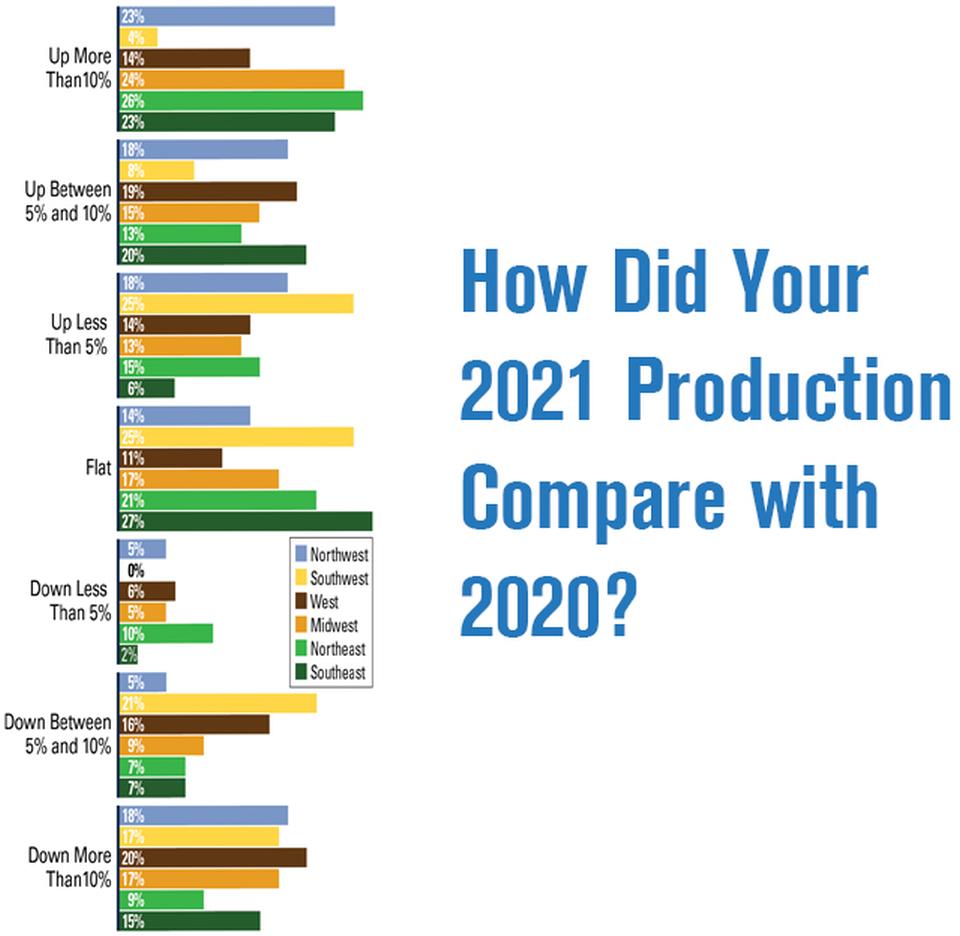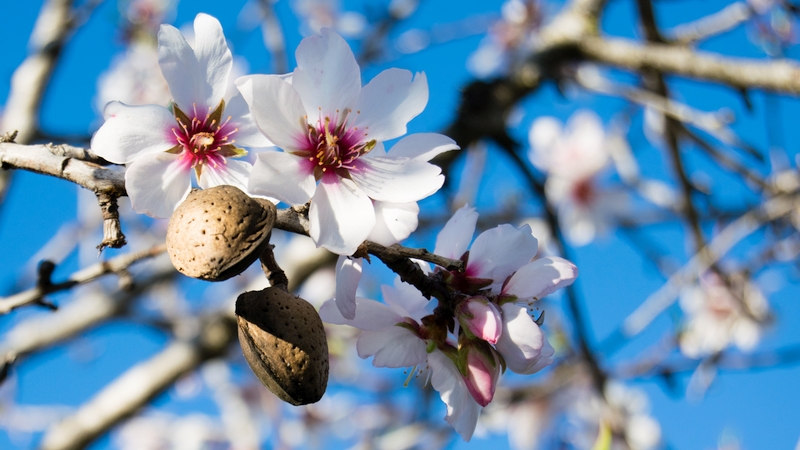Biggest Impacts Now on Vegetable Production? Weather and Consumer Demand
Vegetable production levels reflect the tumultuous year we went through. Results of the 2022 State of the Vegetable Industry survey reflect that. At a national level, production was up overall. That’s mainly due to demand.
But when we look at what happened at a regional level, a more nuanced picture emerges.
The West
The West region is dominated by California, and it reports a downswing in vegetable production.
When asked how production levels compare to the previous year, the West is one of only two regions whose No. 1 response was that production was down. And it wasn’t just down. A fifth of growers in the region say their production was down by more than 10%.
There were widespread reports in 2021 of operations taking acreage out of production in the interior growing regions of California due to water shortages.
In the Salinas Valley, where much of the country’s leafy greens are grown, diseases wiped out quite a bit of mid- to late-season plantings. In particular, Impatiens Necrotic Spot Virus was an issue.
The Southwest
The Southwest (which includes three major producing states: Arizona, Colorado, and Texas) had a markedly down season. Only 4% of its growers report increases of 10% or more. That’s a full 10 percentage points behind the next lowest region, the West. About a fourth of growers in all other regions had production increases of more than 10%.
Slightly more than half of Southwest growers say drought (and access to water) had a significant impact. And 43% report serious to severe hail damage. Hail damage was widespread — growers from every state in the region say hail destroyed crops. For some, it wiped out entire fields.
Another factor may be increased competition. One grower says protected agriculture production competitors drove down his production.
Northeast and Southeast
Operations in the Northeast had the strongest increase in vegetable production, followed by Southeast vegetable farms.
We can look to a couple different reasons why these two regions had strong production last year. First, most growers in these regions sell directly to consumers (84% of growers in the Northeast and 77% in the Southeast).
According to American Vegetable Grower’s research, direct-to-consumer sales in-creased the most during the pandemic when compared to all other types, including retail, canning/processing, and food service.

Top Weather Problems by Region, Ranked by Severity
West. Growers in Western states report the most severe weather impacts. The multi-year drought worsened significantly in 2021, with 71% saying it impacted their season. A third say the drought destroyed crops and drove down production. Generally speaking, events like tornados and are so isolated that the number of operations saying they impacted them is low. In 2021, there were so many wildfires that 35% of the region’s growers cited them as a problem.
Northwest. The Pacific Northwest experienced record-breaking heat in June and July 2021, with temperatures in the usual mild climate reaching 121°F. While heat was not an option in our survey, about half of the Northwest growers wrote it in. There are no statistics to report, but it’s safe to say the heat wave had the biggest impact.
Of the options we did offer, drought topped the list, with 67% of growers saying it affected their season.
Southwest. The Southwest had a rough year, as well. About 63% struggled with the regional drought. Widespread hailstorms damaged crops for 43% of these growers. Texas growers say the winter storm that shut down the state harmed production in the winter-growing areas.
Midwest. Drought conditions affected 40% of Midwest growers. During the same season, 30% dealt with flooding and 29% report extreme rain and/or out-of-season snows and freezes. About 18% say their entire season was down due to extreme rainfall.
Northeast. About 40% of Northeast growers report dealing with extreme rain. A fifth of growers say the rain was bad enough to lower production. Almost as many, 19%, had flooded fields that destroyed crops.
Southeast. Out-of-season freeze/snow and extreme rain events tied as the most widespread problem in the Southeast with 30%. Drought was a close third at 29%. Only 10% of Southeast growers had serious-to-severe damages from flooding and out-of-season freezes, the lowest reports for season-interrupting weather in the country.









